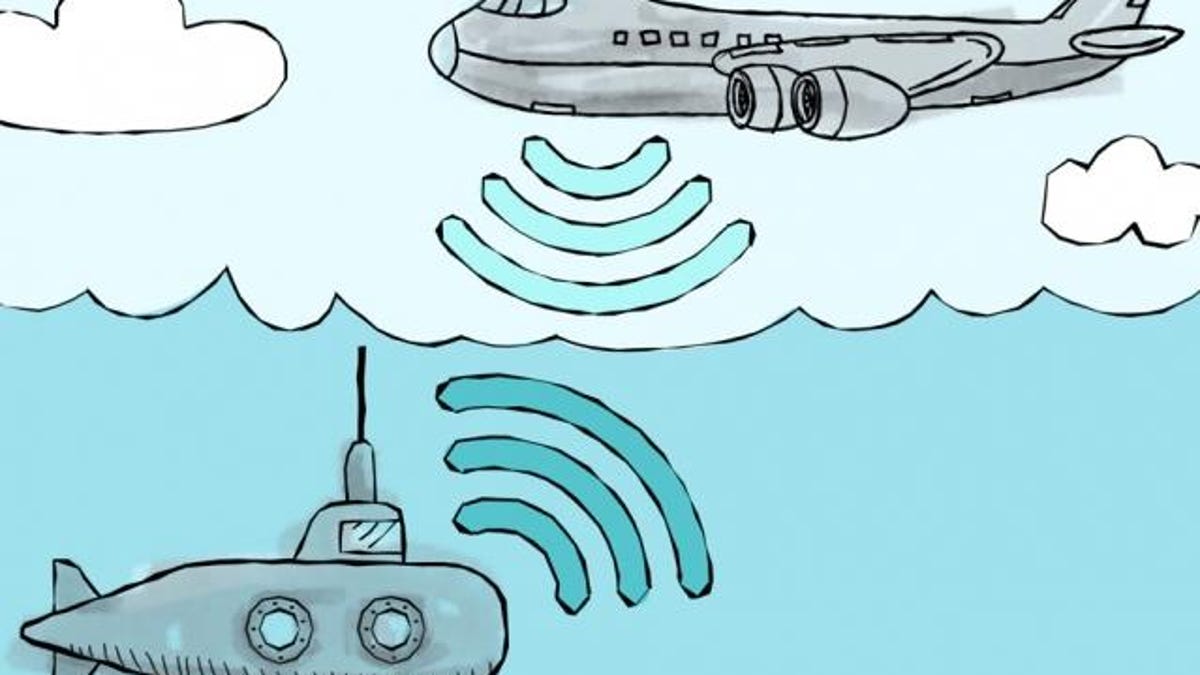MIT finally figures out how to get planes and submarines to communicate
Surprisingly, it's a feat that's never been done before.

The magicians at MIT have come up with another solution to one of the world's science problems.
On Tuesday, MIT Media Lab shared new technology for communication from underwater to the air, a feat not previously possible.
That's because submerged submarines cannot wirelessly communicate with an airplane. The communication mediums don't match up: Submarines use sonar, while airplanes use radio signals, cellular or GPS. Sonar signals reflect off the water surface without breaking through, and radio signals don't travel well through water.
But MIT has the answer.
Using an underwater transmitter, researchers sent a sonar signal to the surface of a swimming pool, causing tiny vibrations. These were picked up by a sensitive radar, that decoded the 1s and 0s that were transmitted as vibrations.
The system is a "milestone," according to co-author of the research paper Fadel Adib, an assistant professor in the Media Lab.
The system is called "translational acoustic-RF communication" or TARF. MIT says it can be used to find airplanes that go missing underwater, to allow military submarines to communicate with airplanes without surfacing and giving away their position, and to allow underwater drones to continuously monitor marine life without having to surface to transmit data.
Outside finding novel ways of communication, MIT recently has come up with solutions in the cooking world, figuring out how to perfectly break a piece of spaghetti in two even pieces. In the medical world, meanwhile, researchers came up with an "in-body GPS system" to track ingestible implants inside the human body.
For more, let MIT explain in its TARF video:

